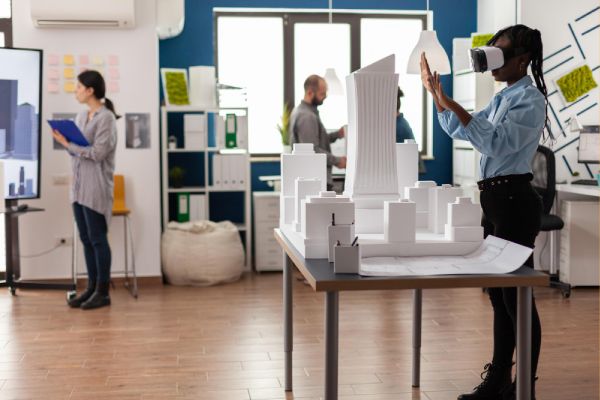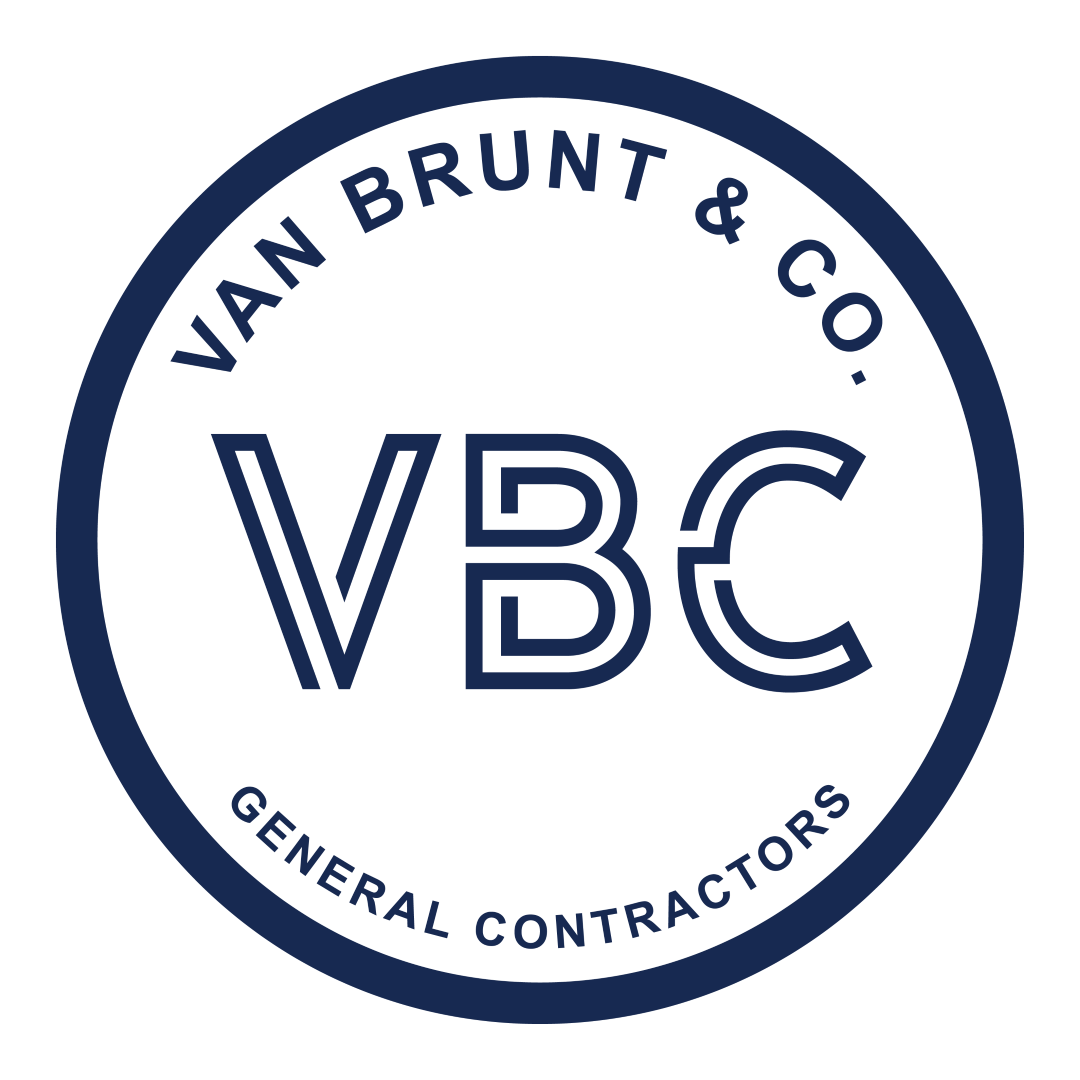Medical office construction, planning, and design involve a detailed process that covers every crucial stage of creating or remodeling a medical facility. From the initial concept to the final touches, it’s essential to ensure the space is safe, efficient, and fully compliant with all medical regulations while still creating a welcoming and professional atmosphere for both patients and staff.
For a medical facility to truly support healthcare providers and patients alike, its layout and features must prioritize functionality, safety, and comfort. A well-thought-out floor plan significantly improves day-to-day operations, helping doctors and medical professionals deliver care efficiently, especially during busy hours when every second counts.
Understanding the challenges of medical office construction, we’ve developed a clear, easy-to-follow guide that walks you through the full process. Whether you’re planning a new build or remodeling an existing space, this comprehensive overview is designed to help you stay on track and achieve long-lasting results with confidence and clarity.

The Medical Office Construction Process: Planning, Design, and Execution
Medical office construction, planning, and design involve a detailed process that covers every crucial stage of creating or remodeling a medical facility. From the initial concept to the final touches, it’s essential to ensure the space is safe, efficient, and fully compliant with all medical regulations while still creating a welcoming and professional atmosphere for both patients and staff.
For a medical facility to truly support healthcare providers and patients alike, its layout and features must prioritize functionality, safety, and comfort. A well-thought-out floor plan significantly improves day-to-day operations, helping doctors and medical professionals deliver care efficiently, especially during busy hours when every second counts.
Understanding the challenges of medical office construction, we’ve developed a clear, easy-to-follow guide that walks you through the full process. Whether you’re planning a new build or remodeling an existing space, this comprehensive overview is designed to help you stay on track and achieve long-lasting results with confidence and clarity.
Planning and Defining a Medical Office Construction Project
To set your medical office construction project on the right path, it’s essential to begin with a clear definition of the type of medical facility being developed. Whether it’s a specialty clinic, a general practice office, a diagnostic center, or another type of medical space, understanding the facility’s purpose helps shape everything from design to functionality. Knowing the services offered and the patient demographics also ensures that the layout and infrastructure align with practical needs.
Establishing these details early will help define how many exam rooms, consultation areas, operating spaces, or labs are required. It also supports accurate planning of patient flow, staff efficiency, and overall usability of the facility. This foundational phase influences both the scope and complexity of the entire medical office construction process.
The next step involves creating a strategic plan. This includes evaluating space needs, identifying essential equipment, defining staffing models, and estimating square footage. Once a program is finalized, concept design follows. This phase translates requirements into floor plans, site layouts, and interior and exterior concepts that bring the project vision to life.
At this stage, estimates for architectural services, construction management, medical furnishings, and specialty fixtures become part of the total project cost. Proper financial planning is critical ensuring funding is available at each stage of the medical office construction journey prevents delays and supports smooth execution. A solid plan upfront sets the stage for long-term success and regulatory compliance.
Documentation and Permitting in Medical Office Construction
When planning a medical office construction project, it’s essential to work closely with your contractor to ensure all required permits and approvals are in place. This includes reaching out to local authorities, zoning boards, and relevant medical regulatory agencies to avoid delays later in the process.
One of the earliest steps in medical office construction is securing land use approval. This should be initiated as soon as the project is conceptualized. Detailed design development must follow, including room-by-room layouts, full floor plans, material selections, interior finishes, furnishings, and elevations for both floors and walls. It’s also important to include shared areas like waiting rooms, administrative spaces, and any planned food service zones. These details are crucial for producing accurate and complete construction documents.
Construction documents are developed once the design has been reviewed and approved. These include working drawings and precise specifications that the construction team will rely on to build the facility correctly and efficiently.
Building permits can only be issued after all design documents and specifications are submitted for review. If any issues or questions arise during this review process, the architect and engineering team must address them promptly to keep the timeline on track. Clear documentation from the start ensures smoother approvals and a more efficient construction phase.
Bidding and Contracting for Medical Office Construction
When starting a medical office construction project, one of the most common methods for hiring a contractor is through competitive bidding. This traditional approach involves inviting pre-qualified general contractors to submit bids based on fully permitted construction documents. While this remains a go-to strategy for many publicly funded projects, private medical developments often follow a more integrated process.
In many cases, clients choose to work with a construction manager alongside an architect and engineer. The construction manager joins the project team early on and not only provides construction insights but also contributes cost estimates and planning support. This collaborative method can improve communication and streamline the construction phase.
It’s essential for clients to request bids from contractors who have direct experience in medical office construction. A successful project depends on evaluating proposals based on cost, timeline, relevant experience, and the contractor’s ability to align with the project’s goals. During the negotiation stage, seasoned commercial remodeling contractors should clearly communicate their vision, including how they will manage the scope of work, handle payment structures, stay on schedule, and ensure compliance with all regulations. This clarity sets the foundation for a smooth and efficient medical office build.
Adding transparency and proactive planning during contractor selection can significantly reduce surprises during construction. Always ensure the team you hire understands the specific needs of a medical environment to achieve long-term success.
Executing a Medical Office Construction Project
The execution phase of a medical office construction project is where planning turns into action. To ensure everything moves forward smoothly, it’s essential to combine active building work with constant monitoring and control.
Key steps during the construction execution phase include:
- Finalize and share the project plan
Ensure the medical office construction plan is complete and accessible to all team members. - Prepare the construction site
Clear debris and set up temporary facilities for crews, tools, and equipment. - Review architectural plans and adjust timelines
Keep project goals realistic by revising the schedule based on updated site assessments. - Monitor progress at every stage
Track milestones closely to maintain momentum and avoid costly delays. - Maintain safety and quality standards
Ensure all work aligns with local codes, safety regulations, and best practices for quality assurance. - Communicate and adapt to changes
If unexpected issues arise, keep the design team and contractors informed to make timely decisions.
Staying organized and responsive during the execution stage ensures that the medical office construction process runs efficiently. A proactive approach prevents setbacks and helps deliver a successful, high-functioning medical space.
Equipment and Furnishing
Proper equipment and furnishing are essential elements of any successful medical office construction project. Items such as X-rays, MRI machines, CT scanners, radiology systems, surgical tables, patient monitoring devices, anesthesia machines, defibrillators, and standard medical tools like stethoscopes and thermometers must be sourced in a timely manner. Planning, identifying, and procuring these medical essentials should begin as soon as the design stage wraps up. Coordinating the delivery and installation of both general furnishings and specialized medical equipment is crucial once the construction phase is complete. Delays can lead to costly setbacks and safety concerns. Staying proactive ensures the facility meets operational standards and is fully equipped to provide patient care from day one.
Interior Finishes and Infrastructure Setup in Medical Office Construction
Interior finishes are a critical element of successful medical office construction. These materials must be durable, functional, and hygienic. Because healthcare environments are exposed to dust, dirt, and moisture, finishes and fixtures should be chosen for their ability to resist buildup and allow for easy maintenance.
Key considerations for interior finishes:
- Use moisture-resistant, non-porous materials that prevent dust and dirt accumulation
- Ensure finishes are designed for easy and frequent cleaning
- Choose fittings and surfaces that support infection control and hygiene
- Create a welcoming, comfortable atmosphere for patients and staff alike
- Balance functionality with patient-centered design
In medical office construction, the comfort and safety of everyone who enters the facility should always be a guiding principle. Materials should promote both clinical efficiency and a sense of ease for visitors and healthcare professionals.
Before interior finishes can be installed, the infrastructure setup must be completed and tested thoroughly.
Infrastructure components to complete before interior installation:
- Plumbing systems that comply with healthcare-grade requirements
- Electrical networks that support safety and functionality
- HVAC systems designed for air quality and infection control
- Communication and IT networks to support operations and emergency systems
All infrastructure must meet industry standards to ensure long-term reliability and compliance. Proper planning from the beginning helps avoid delays and ensures a smoother construction process.
Quality Control, Testing, and Pre-Opening Readiness in Medical Office Construction
In every medical office construction project, quality control inspections are essential to ensure the facility aligns with design plans and meets all health and safety standards. Before opening the facility to the public, it’s critical to test vital systems including HVAC, fire alarms, and medical gas lines to confirm they are functioning properly and in full compliance with regulatory codes. These inspections not only support staff and patient safety but are also necessary for passing inspections and securing official certifications.
Equally important is preparing the facility for operational readiness. This includes training medical staff on how to navigate the space, operate equipment efficiently, and respond to emergency situations. Well-organized training ensures a smooth workflow from day one and helps minimize disruptions to patient care. By proactively addressing these steps, project leaders can streamline the transition from construction to patient service with confidence.
Final Inspections and Opening Phase in Medical Office Construction
The final stage of any medical office construction project involves a thorough inspection and readiness check before the facility can officially open. Once quality control checks, equipment testing, and safety reviews are completed, conduct final inspections to ensure everything aligns with established health regulations and the intended design.
Securing all occupancy permits is essential before launching operations. These legal clearances confirm that the space meets all required codes for patient care. Once permits are obtained and your team is fully trained and familiar with operational procedures, your medical office is ready to open its doors to the public.
Throughout the medical office construction process, it’s crucial to maintain clear communication with your internal staff. Regular walkthroughs, testing sessions, and adaptive adjustments help ensure your team feels confident, safe, and fully prepared to deliver high-quality care. Keeping the staff informed and involved not only promotes smoother operations but also enhances patient trust from day one.
This collaborative approach is key to completing successful medical office construction projects that serve both staff and patients effectively.

How Medical Office Construction Experts Deliver Modern, Functional Spaces
Medical office construction plays a critical role in shaping efficient, welcoming environments for doctors, dentists, veterinarians, and specialists alike. Whether it’s a single-practice buildout or a multi-facility upgrade, expert contractors in this space understand how to design with both healthcare providers and patients in mind. Every project is more than just building walls; it’s about creating spaces that support workflow, improve patient care, and maintain compliance with medical regulations.
Customized Planning and End-to-End Project Management
Specialized teams in medical office construction use proven methods to deliver tailored solutions. From planning to design and final execution, the process is structured to align with the unique demands of medical environments. These contractors don’t just meet expectations they anticipate needs. This results in facilities that feel intuitive to navigate, efficient to operate, and easy to maintain. Whether it’s constructing a new dental suite, veterinary clinic, or outpatient surgery center, these professionals know how to translate vision into a high-performance medical space.
Building Smart, Patient-Centered Facilities
With deep industry experience, medical office construction experts provide end-to-end services from initial consultation and space planning to architectural design and final build. They bring added value by helping healthcare providers visualize their ideal space and offering insightful suggestions along the way. The outcome isn’t just a functional office it’s a custom-built environment that supports growth, streamlines patient management, and enhances daily operations.
Delivering Long-Term Value in Every Project
Efficiency and comfort go hand-in-hand in today’s healthcare settings. Top medical office construction contractors help ensure that every detail, from layout to lighting, contributes to a smooth and patient-friendly experience. They remain involved throughout the process, managing timelines, budgets, and unexpected changes with skill and professionalism. They also provide design guidance, offering ideas and best practices that reflect the latest trends in healthcare facility development.
Choosing the right medical office construction team means more than getting a job done it means building for long-term success. By combining modern design with practical functionality, these professionals deliver results that truly elevate healthcare delivery. If you’re planning a new project, working with seasoned experts ensures your vision is executed with precision and purpose.
Adapting Medical Offices for Future Growth
Flexible design is key in today’s evolving healthcare industry. Expert builders take future expansion into account, ensuring your space can adapt to new technology, regulations, or increased patient volume. This proactive approach supports long-term operational success and minimizes the need for costly renovations down the line.
Meeting Industry Standards and Compliance
Medical office construction requires strict adherence to industry codes, safety regulations, and accessibility standards. Experienced contractors are well-versed in local and federal guidelines, ensuring your facility meets all legal and professional requirements. This level of compliance protects both your patients and your practice.
Maximizing Operational Efficiency with Smart Layouts
A well-planned medical office layout can significantly improve day-to-day efficiency. Construction professionals collaborate closely with clients to optimize patient flow, reduce wait times, and ensure staff can perform their duties effectively. The result is a space that works as hard as the professionals inside it.
Integrating Technology Into Medical Office Construction
Modern medical facilities must be equipped with advanced technology to meet the demands of digital health records, diagnostic systems, and real-time communication tools. Integrating IT infrastructure from the start of a medical office construction project ensures seamless operation across departments and supports future tech upgrades. Planning for data security, telehealth capabilities, and smart energy systems during construction improves both efficiency and patient trust in the long run.
Prioritizing Accessibility and Patient-Centered Design
Accessibility isn’t just a legal requirement, it’s a core component of good medical office design. Every aspect of the space, from entryways and waiting rooms to exam tables and signage, should accommodate patients with varying needs. Incorporating ADA-compliant features, thoughtful wayfinding, and comfortable environments supports patient satisfaction and enhances inclusivity. This design approach also helps healthcare providers deliver care with greater ease and empathy.
The Role of Collaboration in Successful Medical Builds
Medical office construction is a team effort that relies on strong collaboration between architects, contractors, medical staff, and administrators. Involving stakeholders early ensures the space reflects practical needs and regulatory requirements. Open communication helps avoid design flaws, manage costs, and reduce change orders during the build. A collaborative approach creates a shared vision and promotes smoother project delivery from concept to completion.

Designing for Workflow, Comfort, and Sustainability in Medical Office Construction
A successful medical office construction project isn’t just about putting up walls and installing equipment, it’s about shaping a space that enhances workflow, prioritizes patient comfort, and incorporates sustainable building practices. Each of these elements plays a vital role in the long-term performance and purpose of the facility.
Improving Workflow Efficiency Through Smart Layouts
Workflow optimization is one of the most valuable benefits of thoughtful medical office design. When the floor plan aligns with daily operations, healthcare providers can move efficiently between tasks and treat patients with fewer interruptions. Strategic placement of exam rooms, supply storage, charting stations, and staff areas streamlines traffic and supports fast, reliable care delivery. Reducing wasted steps and overcrowded spaces directly boosts productivity and improves both staff satisfaction and patient turnaround times.
Creating a Comfortable and Calming Patient Experience
Equally important is the emotional experience the facility provides. Medical office construction should focus on creating an environment that makes patients feel safe, welcome, and at ease. Design choices like natural lighting, sound-absorbing materials, soft color palettes, and private waiting zones help reduce stress and support emotional well-being. Every detail from the look of the reception area to the functionality of treatment rooms can influence a patient’s perception of care. A well-designed space also supports better communication and trust between providers and their patients, resulting in more positive health outcomes.
Integrating Sustainable Practices for Long-Term Benefits
As the healthcare industry evolves, sustainability is becoming an essential part of medical office construction. Environmentally conscious building practices not only reduce a facility’s carbon footprint but also lead to lower energy costs and healthier indoor environments. Green construction can include energy-efficient HVAC systems, non-toxic finishes, low-flow plumbing fixtures, and smart lighting technologies. These choices not only help meet compliance goals and green certifications but also contribute to the long-term resilience and affordability of the building.
Construction teams that specialize in medical facilities are uniquely equipped to balance these three priorities: efficiency, comfort, and sustainability within tight timelines and budgets. By integrating technology, collaborating with designers and providers, and adhering to health and safety regulations, they bring practical and visionary solutions to life.
When these core principles are built into a medical office from the ground up, the result is more than just a functional space; it’s an environment that supports healing, enhances daily operations, and stands the test of time. Investing in the right medical office construction strategy ultimately leads to higher performance, greater patient satisfaction, and a healthier future for all.
Conclusion
Medical office construction is far more than a basic building project; it’s a strategic process that directly impacts patient care and staff performance. From early planning and regulatory approvals to interior finishes and technological integration, every detail must be intentional. A well-designed medical office creates a smoother workflow, enhances patient comfort, and supports regulatory compliance, ensuring the space functions efficiently from day one.
With expert guidance and clear communication, you can build or remodel a medical facility that meets today’s demands and tomorrow’s growth. Taking a proactive, collaborative approach ensures your project remains on time, on budget, and fully aligned with your vision. In the end, the right construction strategy creates lasting value and helps healthcare providers deliver better outcomes with confidence.
FAQs
What makes medical office construction different from regular construction?
It requires strict health, safety, and regulatory standards not typically found in general construction projects.
How long does it take to complete a medical office construction project?
Project timelines vary, but most take between 6 to 18 months depending on size and complexity.
Do I need special permits to build a medical office?
Yes, you must secure medical-specific permits and comply with zoning and health regulations.
Can I upgrade existing space instead of building new?
Absolutely. Remodeling is a common and cost-effective way to meet modern healthcare needs.
How do I choose the right contractor for a medical office project?
Select one with proven experience in healthcare construction and knowledge of relevant regulations.

